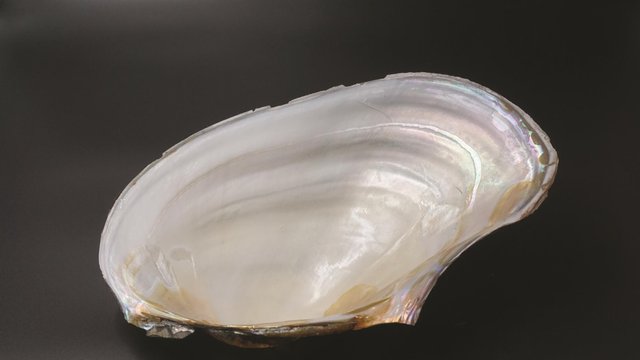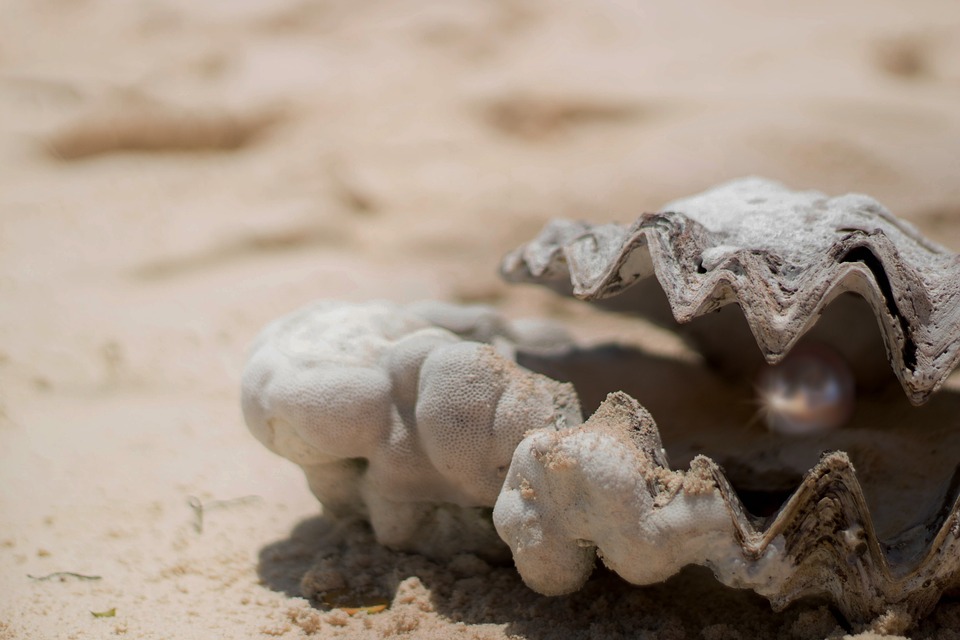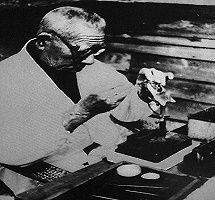Recognize the various processes of pearl formation naturally and artificially
Hello My steemit friends! Hope you all are doing well!
The sparkle of light and charming beauty makes one fascinated by the small creatures from the bottom of the ocean.
Shellfish is a very distinctive animal with its hard shell located on the seafloor and small rivers.
Many who like to find these animals on the beach and there are also like to look for it at the restaurant, aka make it delicious food that inspires appetite to eat it.
The tragedy and the greatest threat to this little creature other than the fish in the sea that always prey on them and when the shells crawl for shelter to shore to save his life, humans also eat it.
How unfortunate the fate of this animal is, but we need to know that there is one special shell that creates beautiful pearls and has a high value.
The history of the discovery of pearls
The discovery of pearls has an interesting story, some four thousand years ago a group of Chinese people suffering from hunger. To satisfy their hunger, a group of Chinese people opened a few shells to eat and then in one of their shells they found a small, glowing light. This little round ball is named Pearl.
The process of pearl formation naturally
Pearls are formed in two ways that is, naturally and technically or can be said by means of pearl cultivation. The formation of pearls is naturally suspected due to irritant factors or due to the ingress of solids into the shell mantle so that this solid will be enclosed in the nacre.

Nacre is a unique substance that has shells that act as body armor, other theories also say pearls are also formed because if there is damage to the mantle and shells, the shells will close and repair the hole using nacre substance. This process is similar to the process of bone formation in humans.
This nacre is called the mother of the pearl.
Due to the presence of foreign substances is the sand particles that enter into the shell, the shell begins depositing the layer. This layer consists of calcium carbonate.
After a while, the pearl formation inside the shells has been completed. Pearls are round, white and shining. This is called pure pearl. However, pearls are basically not just white. Their colors may be black, white, pale blue, yellow, green, and purple.
Artificial pearl formation
The formation of pearls by engineering that is by inserting the nucleus along with a few slices of the coat of other shells.
The slices on the wall of the mantle are intended for the occurrence of biomineralization, namely the closure and the formation of pearl pouches, this operation is very complicated, many stages to be followed, including weakening pearls for several weeks to facilitate the operation.
The selection of shellfish for donors in the lining should be taken seriously, as this layer will later become the core of the pearl layer, and it is believed that the quality of pearls, luster and pearl colors is determined by the selection of the layer.
The history of pearl cultivation techniques
Although the quest for pearls naturally continues to be done, but now Humans have developed some engineering techniques of pearl making in engineering.
This pearl cultivation technique was invented by a Japanese man named Mikimoto.
Because of the very high pearl cultivation potential of Japan keeps the technique secret until the late 80's.
As mentioned in the discussion above, that this method of pearl formation takes a relatively long time to reach two or three years can even exceed that time, when shellfish are taken from the water, pearls formed in it.
These pearls are called artificial pearls or cultivated products, on average all the pearls that we see today are all cultivated produce that then produce pearls and processed into various types of luxury and classy jewelry that many admired women in all parts of the world.
Currently Japan has perfected the technique of making artificial pearls, the result is very beautiful. On May 7, 1934, a pearl found in the Philippines, this pearl is called Pearl of Laozi. The discovery of this pearl measuring 23 cm with a diameter of 13 cm, this pearl weighs about 6.37 kg.
Okay only so, although not satisfactory but at least a little to give an idea of how the process of pearl formation in shells.
Conclusion
Shellfish is a very distinctive animal with its hard shell located on the seafloor and small rivers. The discovery of pearls about four thousand years ago by a group of Chinese people suffered from hunger.
Pearls are formed in two ways that is, naturally and technically or can be said by means of pearl cultivation. The formation of pearls is naturally suspected due to irritant factors or due to the ingress of solids into the shell mantle so that this solid will be enclosed in the nacre.
While the formation of pearls with a technique that is by entering the nucleus along with some other shell coat slices. The formation of a pearl bag made with this operation is very complicated, many stages to be followed, including pearl weakening for several weeks to ease the operation.
Reference
https://www.chemistryworld.com/news/pearl-coating-built-from-the-ground-up/1017294.article
https://en.wikipedia.org/wiki/Mikimoto_K%C5%8Dkichi
https://www.mikimoto.com/en/about-us/history.html
http://yousigma.com/interestingfacts/howarethepearlsformed.pdf
http://www.pearl-guide.com/forum/showthread.php?4709-Cause-of-Several-Layers-of-Missing-Nacre-in-Natural-Pearls-such-as-this



Congratulations, your post was discovered and featured by @OCD in its daily compilation #204!
You can follow @ocd – learn more about the project and see other Gems! We strive for transparency.
If you would like your posts to be resteemed by @ocd to reach a bigger audience, use the tag #ocd-resteem. You can read about it here.
@ocd now has a witness. You can vote for @ocd-witness with SteemConnect or on Steemit Witnesses to help support other undervalued authors!
Yes, Thanks for the support
are you a German electrical engineering student?
truly extraordinary.
I will find you in Stemchat, To talk about engineering
Thank you friend
Bereh aneuk muda....
Hehehe..
Thank you sir..
:)
Welcome to Sir